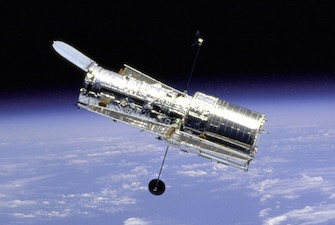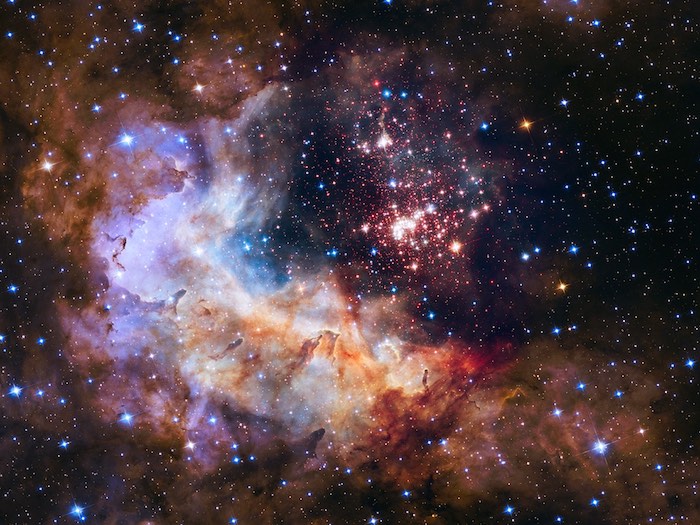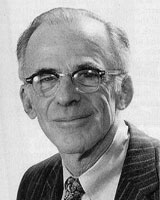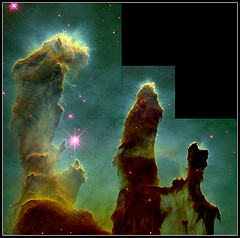 On May 20th, 1990, a major milestone in space exploration was achieved when the Hubble Space Telescope returned the first images ever glimpsed by a telescope situated beyond the bounds of Earth’s atmosphere. Launched a month earlier from the Kennedy Space Center on-board the Space Shuttle Discovery, the Hubble Space Telescope is the first major optical telescope to be placed in space. Above the distortion of the atmosphere, rain clouds and light pollution, Hubble has an unobstructed view of the universe and has provided scientists with images of the most distant stars and galaxies, vastly contributing to our knowledge of the universe. Indeed, few, if any, scientific instruments have come close to matching the productivity of Hubble since it began operations 25 years ago.
On May 20th, 1990, a major milestone in space exploration was achieved when the Hubble Space Telescope returned the first images ever glimpsed by a telescope situated beyond the bounds of Earth’s atmosphere. Launched a month earlier from the Kennedy Space Center on-board the Space Shuttle Discovery, the Hubble Space Telescope is the first major optical telescope to be placed in space. Above the distortion of the atmosphere, rain clouds and light pollution, Hubble has an unobstructed view of the universe and has provided scientists with images of the most distant stars and galaxies, vastly contributing to our knowledge of the universe. Indeed, few, if any, scientific instruments have come close to matching the productivity of Hubble since it began operations 25 years ago.
To celebrate this milestone we will take a look back at the story of how this space telescope came to be as well as some of the incredible discoveries NASA researchers have been able to make thanks to the Hubble mission.
A Brief History of Telescopes and Why Hubble Was Necessary
Not many inventions have so altered the sociopolitical climate of its own time in quite the way that the telescope did when it was greatly improved in the early 17th century thanks to the work of famed Italian astronomer and physicist Galileo Galilei. By 1609, Galileo had constructed a telescope that could magnify objects up to 20 times, much stronger than contemporary telescopes of the day that could magnify objects only up to three times their size.
From those earliest days, the increasing power of the telescope gave humans a scientific insight into the heavens, a subject which has puzzled humans since the earliest days of human society. Since the 2nd century AD, the geocentric cosmology posited by the Ptolemaic model of the universe was widely accepted by much of the world, most importantly by the Catholic Church. Using the most powerful telescopic equipment of his day, however, Galileo was able to detect moons orbiting Jupiter and other planetary body movements which led him to support the Copernican heliocentric model which puts the Sun at the center of our universe. Although Pope Urban VIII gave Galileo some leeway in writing about a mathematical proposition in support of the heliocentric model, the astronomer’s strongly worded Dialogue Concerning the Two Chief World Systems, published in 1632, caused him to be declared a heretic by the Inquisition in Rome. He would live out the final nine years of his life under house arrest.
Despite the hardships that the telescope posed to perhaps its earliest champion, the telescope has been major tool used to advance the science of astronomy over the years. In 1688, Sir Isaac Newton built a telescope which addressed the issue of chromic aberration, or fringes of color surrounding bright celestial objects, by removing the telescope’s glass lens and utilizing metallic mirrors composed of copper and tin. Although Newton’s work was focused on the study of optics, this and other scientific discoveries, such as 19th century advances in spectrometry which allowed scientists to determine the chemical makeup of stars, continued advancing our knowledge of our vast universe.
There was only one significant problem that would always prove a limitation to astronomers here on Earth: the atmosphere of our planet. No matter how powerful the telescope, Earthbound instruments have to peer through the skies of our planet which contain air pockets of different temperatures. As light travels towards Earth, it is refracted by those moving air pockets which cause the light to bend in unpredictable ways, producing a blurrier telescopic image than one that could be recorded if the telescope was situated in outer space. This understanding of the problems facing astronomy here on Earth led German physicist Hermann Oberth to suggest the benefits of launching a telescope into orbit around the Earth in his 1923 publication The Rocket into Planetary Space, which proffered other seminal concepts in space travel.
In 1946, a young American astronomer would become one of the earliest voices pushing for the launch of a space telescope that would orbit the night skies, returning what would surely be the clearest images of the universe ever known. A paper published that year by Lyman Spitzer, Jr., entitled Astronomical Advantages of an Extra-Terrestrial Observatory, argued that a space observatory would be capable of detecting a very wide range of wavelengths without dealing with the light-refracting traits of our own atmosphere. In 1965, Spitzer would be chosen by the National Academy of Sciences to head up a committee that would define the objects for a proposed Large Space Telescope.
Congress would approve funding for the Large Space Telescope in 1977 with astronaut training for space telescope missions commencing the following year; it was decided that conducting servicing missions while in orbit would be much more cost-effective than bringing the telescope back to Earth for refurbishments. By 1983, the Space Telescope Science Institute was formed and would come to serve as the science operations center for the telescope. Before the telescope was completed and launched it was renamed the Hubble Space Telescope in honor of the scientific contributions of Edwin Hubble, the American astronomer who built up a body of work during the 1920s which argued that the billions of galaxies in the night sky were moving rapidly away from each other, suggesting an ever-expanding universe.
Delays pushed off the eventual launch date of Hubble until the earliest months of the final decade of the 20th century. Issues with the telescope’s Optical Telescope Assembly would come to hound the mission in its earliest days, and production issues were experienced with this component as well as the Wide Field/Planetary Camera. Redesigns reduced the weight and redundancy of the resulting space telescope. Like many other NASA programs during the 1980s, Hubble’s launch was further delayed by the 1986 Challenger tragedy which shuttered the Space Shuttle program for a couple of years.

The brilliant tapestry of young stars flaring to life resemble a glittering fireworks display in the official 25th anniversary NASA Hubble Space Telescope image, released to commemorate a quarter century of exploring the solar system and beyond since its launch on April 24, 1990.
Hubble Reaches Orbit, Greatly Increases Our Knowledge of the Universe
While grounded, NASA engineers continued to make improvements to Hubble, upgrading the communications systems and on-board computers as well as incorporating newer solar cell technologies for drawing power from the Sun. Finally, 44 years after Lyman Spitzer first suggested sending a telescope into orbit, NASA finally achieved the feet when the Discovery launched from the Kennedy Space Center on April 24th, 1990.
It’s almost impossible to create an exhaustive list of the number of scientific discoveries that have been made by researchers utilizing Hubble’s eye out on the universe. Since the telescope began operations a quarter century ago, more than 1.2 million observations of the universe have been made with the telescope. Those observations have provided the basis for more than 12,800 scientific papers published around the world. The telescope has an incredible accuracy of 0.007 arc seconds, similar to the accuracy needed to shine a laser onto a dime at a distance of 200 miles. Without the interference posed by Earth’s atmosphere, Hubble can view astronomical objects with an angular size of 0.05 arc seconds, which as NASA points out is analogous to viewing a pair of fireflies in Tokyo all the way from Maryland. This telescope, about the length of a large school bus, has been able to capture images of stars and other bodies located 13.4 billion light years away from Earth.
Successful experiments completed using the Hubble telescope have shown the value of following what amounts to a glorified hunch. Over the course of 10 days in December 1995, researchers decided to let Hubble focus on one dark patch of the night sky, just to see what, if anything, the telescope could see in the darkness. Researchers worried that the experiment could have been a waste of 10 days worth of experimentation but were amazed to discover 3,000 galaxies of varying sizes in the study that came to be known as Hubble Deep Field. This test helped to prove how the dark vastness of space held an innumerable number of galaxies; the best guess of the world’s current astronomers is that the universe holds one hundred billion galaxies.
Images captured by Hubble also helped the global science community learn more about the formation of planets and galaxies. In 1995, Hubble captured images in the Orion Nebula of intense radiation jets reaching trillions of miles long as well as the gaseous protoplanetary disks which serve as raw material for the stars and planets of a forming solar system. Other planetary discoveries pioneered by Hubble researchers include the first visible-light image ever captured of a planet outside of our solar system, Fomalhaut b, located 25 light years from earth in the Piscis Australis constellation.
Hubble also led to a number of discoveries on the formation of entire galaxies. Although U.S. satellites had been detecting gamma ray events in the universe since the 1960s, it was Hubble which showed that these bursts of gamma rays typically come from star-forming regions which have stars with a low metal content and may be a sign of a black hole forming. Hubble also learned that galaxies can often merge and in 2012, researchers analyzing data from Hubble announced that the Milky Way and Andromeda galaxies will collide head-on in four billion years, setting the stage for a massive realignment of our galaxy regardless of the fact that our solar system is expected to stay intact.
The Hubble Space Telescope is nearing the end of its service life, which NASA believes will come in 2018 or whenever the telescope’s scientific instruments finally give out. However, Hubble will not be the last telescope that will be launched into the space of our solar system. NASA is already planning the launch of the James Webb Space Telescope for October 2018. This telescope will orbit the Sun, not Earth, and will do so at the second Lagrange point, a region of space one million miles away from Earth. This placement allows a special orbit for the Webb telescope, keeping it aligned with planet Earth to provide optimal protection from the intense radiation of sunlight. The new telescope and its infrared technology is expected to provide even better insights into planetary systems, mini-quasars and how galaxies are assembled than are currently gleaned from the Hubble, which is situated a mere 340 miles away from Earth’s surface. The distance of the Webb’s orbit means that it cannot be serviced once it is launched but it will carry enough fuel for a 10-year service life.

![[IPWatchdog Logo]](https://ipwatchdog.com/wp-content/themes/IPWatchdog%20-%202023/assets/images/temp/logo-small@2x.png)



![[Advertisement]](https://ipwatchdog.com/wp-content/uploads/2024/04/Patent-Litigation-Masters-2024-sidebar-early-bird-ends-Apr-21-last-chance-700x500-1.jpg)

![[Advertisement]](https://ipwatchdog.com/wp-content/uploads/2021/12/WEBINAR-336-x-280-px.png)
![[Advertisement]](https://ipwatchdog.com/wp-content/uploads/2021/12/2021-Patent-Practice-on-Demand-recorded-Feb-2021-336-x-280.jpg)
![[Advertisement]](https://ipwatchdog.com/wp-content/uploads/2021/12/Ad-4-The-Invent-Patent-System™.png)







Join the Discussion
No comments yet.